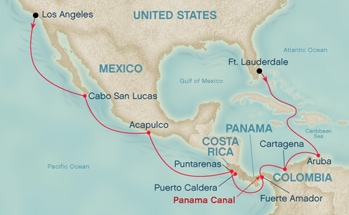 The Port of Maputo in Mozambique has excellent
development potential. It is located along the east coast of Southern Africa,
to the north of the Ports of Durban and Richards Bay. It is one of several ports
that connect via road and railway line to South Africa’s mega-metropolis of
Johannesburg that is still Africa’s leading financial hub.Roads and railway
lines from ports of Maputo, Durban, Richards Bay, East London and Port
Elizabeth cross over and pass through tunnels of the extensive and high
elevations of Dragon Mountain (Drakensberg). Maputo offers the shortest railway
distance to Johannesburg and so could be further developed at lowest cost.
The Port of Maputo in Mozambique has excellent
development potential. It is located along the east coast of Southern Africa,
to the north of the Ports of Durban and Richards Bay. It is one of several ports
that connect via road and railway line to South Africa’s mega-metropolis of
Johannesburg that is still Africa’s leading financial hub.Roads and railway
lines from ports of Maputo, Durban, Richards Bay, East London and Port
Elizabeth cross over and pass through tunnels of the extensive and high
elevations of Dragon Mountain (Drakensberg). Maputo offers the shortest railway
distance to Johannesburg and so could be further developed at lowest cost.
Challenge at Durban
While South Africa has plans to expand Africa’s
busiest container port, the Port of Durban, there has been much public
opposition from groups of Durban residents to future port expansion. Durban has
also experienced the ongoing problem of silt/sand build up at the port entrance
that has a nominal depth of 12.8 meters (42 feet). This may be its natural
depth caused the combination of the south flowing ocean current and wave action
that stirs up sand to the north of the northward pointing entrance to the port.
The entrance to the 20 meter (66 foot) deep Richards Bay is perpendicular to
the ocean current.The overland connection between Durban and Johannesburg
operates near capacity and upgrading the railway line with its multiplicity of
tunnels is both a costly and formidable undertaking. While some containers from
overseas may arrive near Port Elizabeth, the overland distance to Johannesburg
is extensive.It may cost less to upgrade and develop the railway line between
Maputo and Johannesburg to double track than to redevelop the Durban –
Johannesburg line. There may even be scope to explore the possible future
operation of super-wide railway container technology that straddles over double
track railway lines, to increase the number of containers trains carry.
Unexpected Mega Ships
When expansion of the Panama Canal was first
evaluated, the largest container ships entering service carried some 12,000 TEU
and were to be later dubbed neo-Panamax ships. At the time, South Africa
evaluated the logistics of developing a transshipment port for neo-Panamax
ships near Port Elizabeth, where ships sailing to and from East Africa, West
Africa, South America and Asia would converge. Then the unexpected happened
when Maersk began to explore the possibility of a container ship built to a
much larger scale than the neo-Panamax ships and capable of sailing through the
Suez Canal between Europe and Asia.The superior economics of the larger
container ship made the concept attractive on the trans-Pacific services
between Asia and the west coast of North America. Several major ports
internationally were dredged and modified to berth the mega-ships and articles
appeared suggesting that such ships could operate the South America –Asia
service, sailing via Southern Africa. Plans were subsequently announced to
dredge Port of Santos and the develop Port of Pecem located on the northern
outskirts of Fortaleza, Brazil that could serve as a transshipment port for smaller
ships that could connect to South American and Africa ports.
Revising the Logistics
 The development of South American ports for mega-size
container ships creates and uncertain future for South Africa’s transshipment
port for neo-Panamax size of container ships. Mega-size ships that sail via
Southern Africa between South America and Asia can be built to a larger size
than Suezmax container ships, perhaps up to 26,000 or 27,000 TEU and even
extend the range of operation between South America and Western Europe.One
option is that future mega-ships that sail the Western Europe – Brazil – Asia
service sail by South African ports while another option would be to
investigate future prospects at Port of Maputo.South Africa’s second largest
city is Cape Town which is the closest South African port to the sea route that
mega-size container ships would sail between Asia and South America. Sections
of Table Bay just outside the port area are 15.6 meters (51 feet) deep. The
combination of dredging Table Bay and either extending the present breakwater
or building a new breakwater could provide a deep water zone for mega-ships.
Deep dredging a section of the port plus some port reconstruction could provide
a quay to berth mega-size container ships that would undergo partial unloading
and partial loading at Cape Town.
The development of South American ports for mega-size
container ships creates and uncertain future for South Africa’s transshipment
port for neo-Panamax size of container ships. Mega-size ships that sail via
Southern Africa between South America and Asia can be built to a larger size
than Suezmax container ships, perhaps up to 26,000 or 27,000 TEU and even
extend the range of operation between South America and Western Europe.One
option is that future mega-ships that sail the Western Europe – Brazil – Asia
service sail by South African ports while another option would be to
investigate future prospects at Port of Maputo.South Africa’s second largest
city is Cape Town which is the closest South African port to the sea route that
mega-size container ships would sail between Asia and South America. Sections
of Table Bay just outside the port area are 15.6 meters (51 feet) deep. The
combination of dredging Table Bay and either extending the present breakwater
or building a new breakwater could provide a deep water zone for mega-ships.
Deep dredging a section of the port plus some port reconstruction could provide
a quay to berth mega-size container ships that would undergo partial unloading
and partial loading at Cape Town.
Options for Maputo
Sections of Port of Maputo were dredged from 9.8
meters (32 feet) to over 14 meters (46 feet). However, unlike Port of Durban
that has no river flowing into the port area, several rivers flow into Maputo
Bay and could carry sand/silt into the port. There may be future need to
install deflector barriers along some sections of some rivers to redirect the
silt toward the river banks, from where local industries may excavate the silt
for use in construction or sent to farms.
A rock breakwater northeast of the
port area may be able to deflect the sand laden ocean current toward ocean.At
present, the DP Ports container terminal is 300 meters (984 feet) in length.
The combination of lengthening the quay to over 400 meters (1,312 feet) and
dredging the channel between the container terminal and deeper water at Maputo
Bay would enhance prospects for mega-size container ships to call at Port of
Maputo while sailing between South America and Asia. These ships would undergo
a partial unloading and reloading of containers to/from the Greater
Johannesburg area.Further development of the Port of Maputo could make it
suitable for transshipment of containers involving smaller ships that would
connect to Kenyan and Tanzanian ports.
Conclusions
 There has been public opposition at Durban to
expanding Africa’s busiest container terminal. The overland connection between
Durban and Johannesburg is operating at capacity, with a massive projected
future increase in container traffic along this link.Within the next few years,
mega-size container ships will sail between Asia and South America, with a
possible port of call in Southern Africa. Port of Maputo has prospects for
future expansion and future development of the container terminal to berth
larger ships after the quay is extended and navigation channel dredged to
greater depth.Port of Maputo could require future breakwaters to limit future
silt build up.The comparatively short railway line between Maputo and the
Pretoria – Johannesburg area would cost less to upgrade than the railway lines
extending inland from Durban, East London and Port Elizabeth.While Cape Town
has potential for future development to berth mega-size container ships,
perhaps such development would occur after development of Port of Maputo.
There has been public opposition at Durban to
expanding Africa’s busiest container terminal. The overland connection between
Durban and Johannesburg is operating at capacity, with a massive projected
future increase in container traffic along this link.Within the next few years,
mega-size container ships will sail between Asia and South America, with a
possible port of call in Southern Africa. Port of Maputo has prospects for
future expansion and future development of the container terminal to berth
larger ships after the quay is extended and navigation channel dredged to
greater depth.Port of Maputo could require future breakwaters to limit future
silt build up.The comparatively short railway line between Maputo and the
Pretoria – Johannesburg area would cost less to upgrade than the railway lines
extending inland from Durban, East London and Port Elizabeth.While Cape Town
has potential for future development to berth mega-size container ships,
perhaps such development would occur after development of Port of Maputo.






